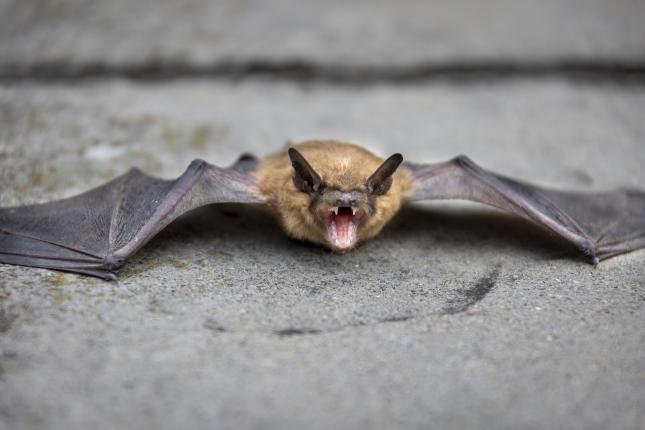BAT of the Month - Fringed Myotis
The Fringed Myotis (Myotis Thysanodes) is a fascinating and often overlooked species of bat that thrives in the diverse landscapes of western North America, including parts of the southwestern United States, Mexico, and western Canada. This small bat is named for the unique fringe of stiff hairs found along the trailing edge of its tail membrane, a feature that sets it apart from other bat species.

Fringed Myotis are primarily insectivorous, and they play a vital role in controlling pest populations by feeding on a wide variety of insects such as moths, beetles, and flies. This nocturnal hunter uses echolocation to find its prey, sending out high-pitched sound waves that bounce back when they hit an object, allowing the bat to "see" its surroundings through sound. This skill is especially useful during its twilight foraging flights, when visibility is low and insects are most active.
Habitat and Roosting Behavior
Fringed Myotis prefer habitats that offer a mix of woodland or forest cover and open spaces for foraging. They are typically found in dry coniferous forests, scrublands, and even desert environments, often at elevations between 4,000 to 7,500 feet. These bats are highly adaptive and can roost in a variety of locations, including caves, rock crevices, old buildings, and tree hollows. During the day, they often seek shelter in these secure spots, returning night after night to the same roost. In colder months, they either migrate or hibernate depending on the local climate.
Reproduction and Lifespan
The reproductive cycle of the Fringed Myotis is fascinating. Breeding occurs in the fall, but females delay fertilization until the spring, ensuring that their young are born when food is abundant! Typically, a female will give birth to just one pup per year, making each individual important for the survival of the population. The young are weaned after about six weeks and become independent shortly thereafter.
Fringed Myotis can live up to 15 years in the wild, though their populations are vulnerable to changes in habitat due to deforestation, human encroachment, and climate change. Bats like the Fringed Myotis also face threats from white-nose syndrome, a fungal disease that has decimated many bat populations across North America. Unfortunately, white-nose syndrome has been a problem in Colorado this summer.
Importance to Ecosystems
As insectivores, Fringed Myotis play a critical ecological role in maintaining balanced ecosystems. By consuming vast numbers of insects each night, these bats help control populations of agricultural pests, reducing the need for chemical pesticides. Their presence is also a sign of a healthy environment, as bats are sensitive to changes in habitat quality.
Despite their crucial role, many bat species, including the Fringed Myotis, are under threat from habitat destruction, climate change, and disease. Conservation efforts that protect natural habitats and mitigate human impact are key to ensuring the long-term survival of these bats.

